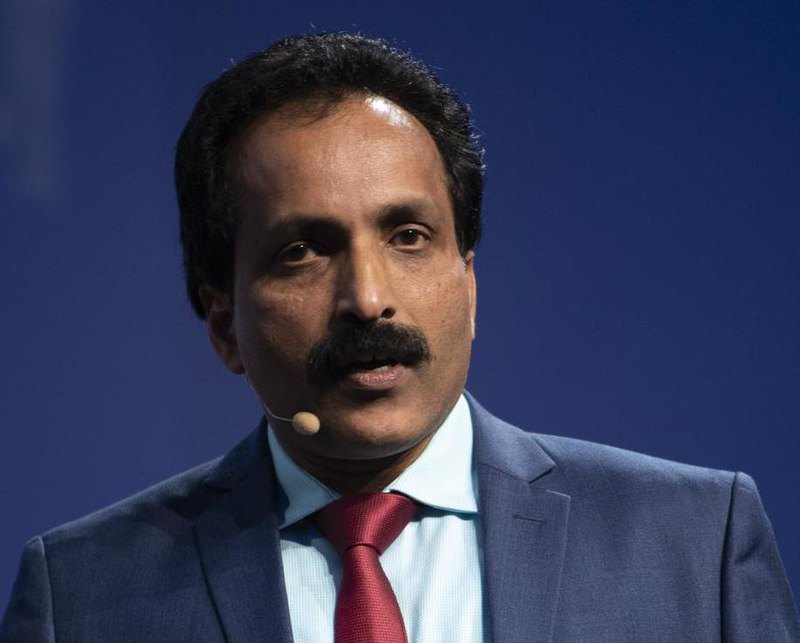 ISRO
ISRO
Planning to send first Indian astronaut to moon by 2040, says ISRO chief S Somanath
Thiruvananthapuram: After the stellar success of its history-making Chandrayan-3 lunar mission, ISRO is going full throttle with its plans to send Indian astronauts for the first time on the moon by 2040, says its chairman S. Somanath.
“Looking ahead, ISRO aims to take the next step in space exploration with the Gaganyaan programme, planning to launch a crew of 2 to 3 Indian astronauts into Low Earth Orbit (LEO) for up to three days before safely returning them to a predefined site in Indian waters,” he told Manorama Yearbook 2024, which was released last week.
Four test pilots from the Indian Air Force have been selected as Astronaut-Designates for the mission.
Currently, they are undergoing mission-specific training at Astronaut Training Facility (ATF) in Bengaluru, said Somanath, who is also Secretary, Dept. of Space, and Chairman of, Space Commission.
The inaugural manned space mission Gaganyaan involves developing critical technologies, including a human-rated (capable of safely transporting humans) launch vehicle (HLVM3), an Orbital Module comprising a Crew Module (CM) and Service Module (SM), and life support systems.
Two identical un-crewed missions (G1 & G2) besides Integrated Air Drop Test, Pad Abort Test, and Test Vehicle flights will precede the manned mission.
CM is a habitable space with an Earth-like environment in space for the crew and is designed for safe re-entry. Safety measures also include a Crew Escape System (CES) for emergencies.
The first development flight of Test Vehicle (TV-D1) was launched on October 21, 2023, and it successfully demonstrated in-flight abort of the Crew Escape System, followed by Crew Module separation and its safe recovery from the Bay of Bengal by the Indian Navy.
“The success of this test flight was crucial for subsequent unmanned missions and the ultimate human space mission, expected to be launched in 2025,” he said.
Another important project of the ISRO, Mr Somanath said, is Aditya L1, which is India’s maiden solar exploratory mission. It will study the sun from the unique vantage point of Lagrange Point 1, showcasing the country’s prowess in both lunar and solar research. Laden with seven scientific payloads all developed indigenously in collaboration with various ISRO centres and academic institutes, Aditya L1 spacecraft will seek to discover mysteries of the sun, including measuring solar corona, solar wind, solar flares and interplanetary magnetic fields.
Launched on September 2, 2023, Aditya L1 is poised for a five-year mission. The spacecraft is on its intended path towards Sun-Earth Lagrange Point 1(L1), approximately 1.5 million km from Earth, where it will be inserted into a Halo orbit in January 2024, he informed.
About the success of the Chandrayaan-3 mission, he said it was a historic achievement, leading to the declaration of August 23 (landing near the lunar south pole) as ‘National Space Day in India’ by the Prime Minister. In the mission life of 14 earth days, it yielded valuable lunar data, discovering aluminium, calcium, iron, chromium, titanium, sulphur, manganese, silicon, and oxygen in lunar soil.
Referring to some other ambitious ongoing and upcoming missions, he said these include Small Satellite Launch Vehicle (SSLV), Reusable Launch Vehicle (RLV) programme, X-ray astronomy mission XPOSAT (X-ray Polarimeter Satellite), Space Docking Experiment, and LOX-Methane engine. “Together, these transformative initiatives define a new space saga in India's pursuit of space exploration, fostering scientific progress and an ever-expanding cosmic horizon.”
Elaborating, he said SSLV, a three-stage launch vehicle, can launch 500 kg satellite into 500 km planar orbit, and can accommodate multiple satellites. It has launch-on-demand feasibility, minimal launch infrastructure requirements and low cost. With two flights in the recent past, SSLV is at the stage of transition from developmental flights to operational flights.
SPADEX (Space Docking Experiment), planned for launch in the third quarter of 2024, is a twin spacecraft mission dedicated to advancing docking and formation flying technologies, with a scope of applications in human spaceflight. The mission involves two mini-satellites - one designated as a Chaser and the other as a Target, launched together as co-passengers.
“The success of the docking experiment holds significant importance in paving the way for lunar sample return missions under future Chandrayaan missions,” he pointed out.
Equally significant is the ongoing development of ‘LOX methane’ (liquid oxygen oxidiser and methane fuel) engines, which is a game changer in future technology. It holds the potential to facilitate human exploration of environments on other planets, such as Mars. Methane is a potential space fuel that can be synthesized using water and carbon dioxide in space, he said.
Somanath said the Prime Minister has set ambitious goals such as commissioning ‘Bharatiya Antariksha Station’ (Indian Space Station) by 2035, and embarking on interplanetary exploration, featuring a Venus Orbiter Mission and a Mars Lander, to further solidify India's presence on the global space stage.
“India's space programme is poised to reach new heights in the coming years…With every mission launched and every discovery made, ISRO reaffirms its position on the global stage as a force to be reckoned with, instilling national pride and expanding India's technological feat,” he added.
Support Our Journalism
We cannot do without you.. your contribution supports unbiased journalism
IBNS is not driven by any ism- not wokeism, not racism, not skewed secularism, not hyper right-wing or left liberal ideals, nor by any hardline religious beliefs or hyper nationalism. We want to serve you good old objective news, as they are. We do not judge or preach. We let people decide for themselves. We only try to present factual and well-sourced news.






